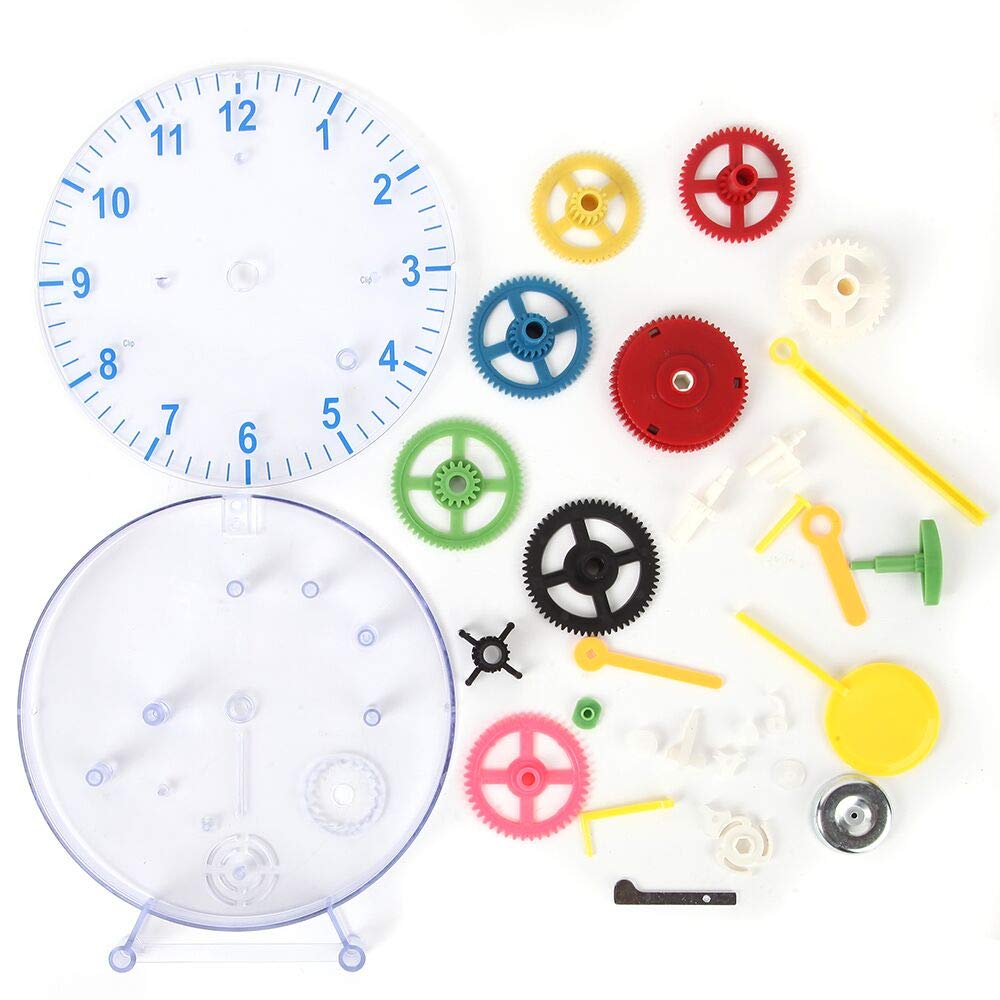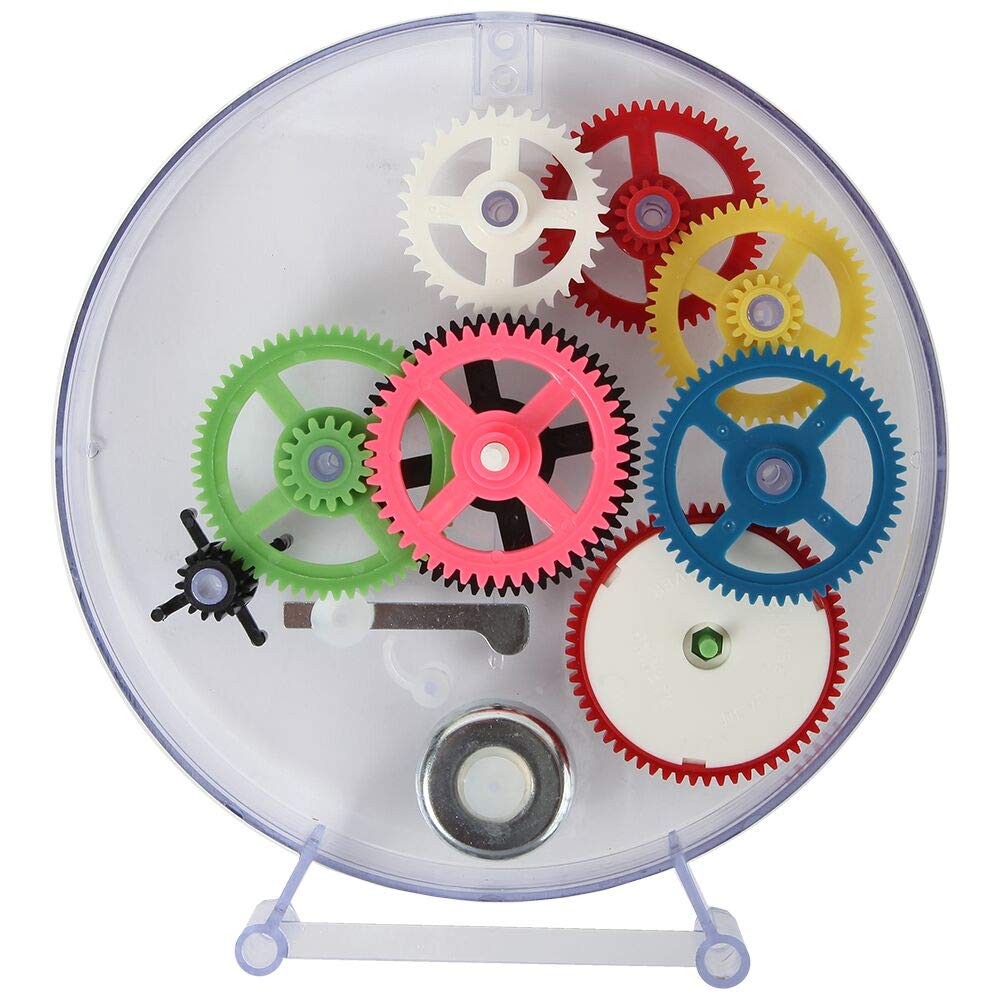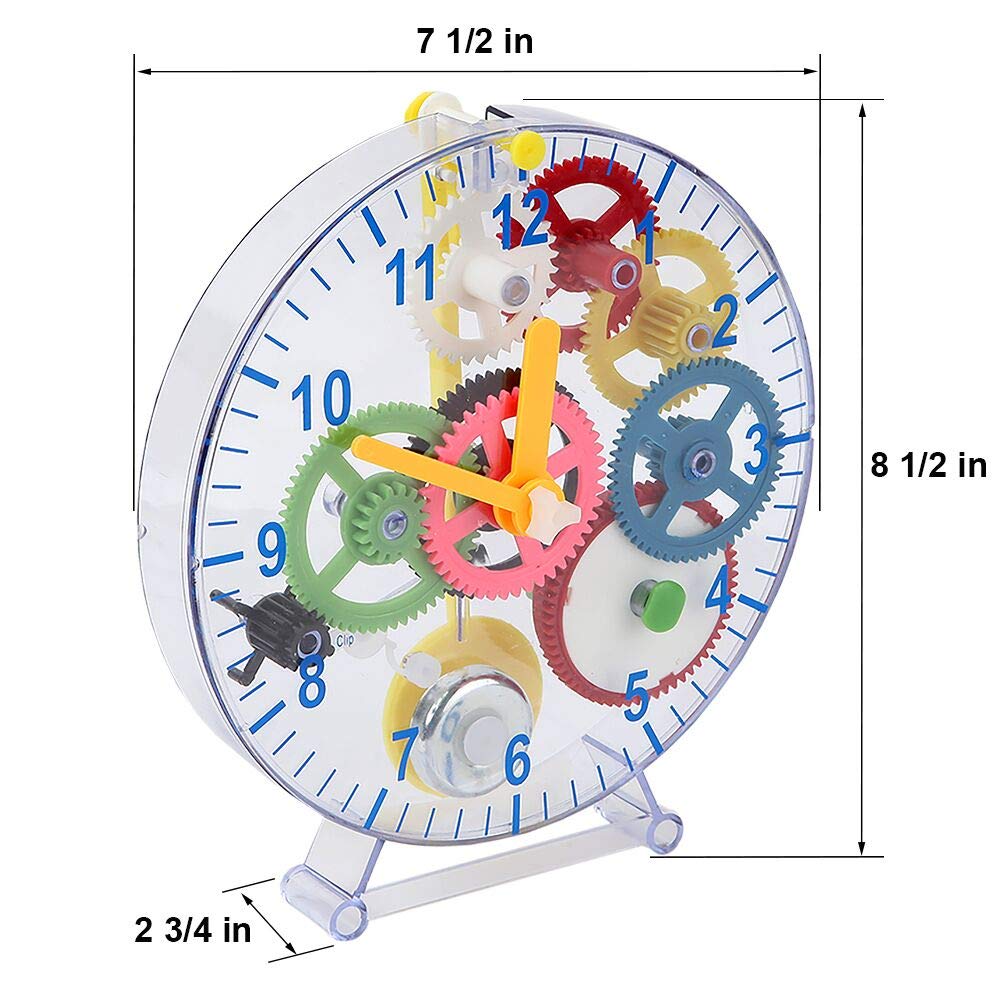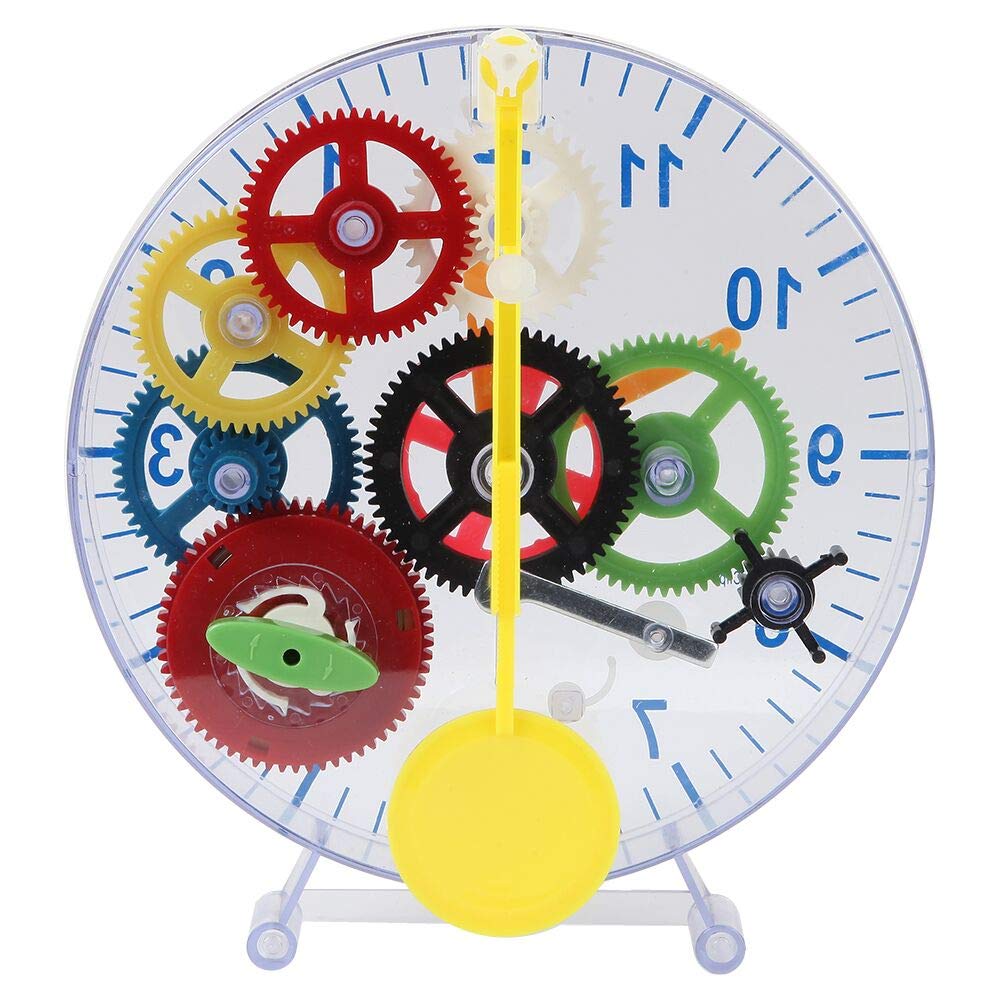






🕰️ Tick-tock, let’s rock the clock with creativity!
Lily's Home Do-It-Yourself Children's First Puzzle Clock Kit is a 31-piece educational kit designed to teach children about clock mechanics without the need for batteries. This colorful and engaging kit promotes cognitive development and is suitable for all ages, making it a perfect gift for curious minds.
A**R
Needs adult help but actually worked great
This thing actually works -- my 3 year old was fascinated. Yes it's loud, but it's a real, functioning, pendulum clock. You can stop it, like any pendulum clock, by grabbing the pendulum and holding it in the center position and letting go.There were a few problems. The instructions are quite pretty, but the very first part is almost impossible to see in the photograph. A pointer with the part number would have helped a lot. (More about this part later.) Also, a lot of the parts can be assembled in more than one way. An adult is essential. You need to use logic or just look at things carefully. There are many gears with a shaft, like real clocks have. If you put them upside down it won't work. Some of these are obvious, but some aren't. You just need to think about what you're doing. It's really not that hard. Going through the instructions, with the 3 year old circling each step with a pen (this taught him how to hold a pencil!) and him finding each part and putting all but the hardest in (with my help), we got the thing totally finished and it worked the first time (pendulum moved and escapement worked) except the hands didn't turn. I took the front cover off and reinserted the red spring/gear and seated the center shaft a little better into its hole. Then I paid a little more attention to the friction fasteners that hold the front and rear cover together. But really squeezing everything well, when I reassembled it, all the gears meshed and the hands moved.The only problem was that very first part, which was so hard to see. It's a part of the chime mechanism. The chime works by a wheel that is turned by the minute hand. It lifts and drops a small metal hammer onto the chime. But that clear part is really totally unnecessary the way it is designed. I found that the curved arm that comes off of it needed to be sharply bent (it's nylon or similar) to let the hammer descend all the way to hit the little chime. The chime is quite soft. The fact that the chime barely works makes me think the instruction writer doesn't even mention it -- nowhere does it say it chimes every 15 minutes. And the geometry of the chime wheel seems to make it impossible for the chime to be on the quarter hour (because the minute hand has a square fitting so is not smoothly adjustable.) If you look at the little nylon piece, it looks like it's meant to be a spring. In other words, I'll bet the original design was that the chime wheel compresses the piece somehow, and when the hammer is released it's supposed to snap down and hit the bell. If anybody can figure this last part out it would mean a little neater toy. But my 3 year old grandson, who is into trains but not really clocks, loved it. It sits on the table an ticks now. He doesn't pay too much attention to it now, but it was really enjoyable to put it together with him.
Y**A
Exactly what we were looking for
One day, seemingly out of the blue, my eight year old daughter expressed an interest in being a clockmaker, and this toy seemed to fit the bill.I myself have had a heightened appreciation of traditional clock making ever since reading Dava Sobel's wonderful "Longitude". But I hadn't ever really had much experience working with one directly, and was looking forward to sharing a "1st clock building" experience together with her.When I presented it to her, however, instead of being as excited as I had hoped, she was apprehensive and a little glum. It turns out she was worried because at first glance it appeared to be overly complicated. I was surprised given that it looks rather friendly and appropriate for even smaller kids, but sometimes it's easy to forget how differently children perceive things. I reassured her that we could do it together and that I'd do my best to let us find the fun in the project. Over the last year, we had started building more complex Lego kits, including an interactive robotic cat from the Lego Boost set that she had successfully built with only a small amount of help, so I was mostly confident she could handle this, given it's far more limited part count and constrained assembly space.I chose to wait for an open afternoon with plenty of free time and we started. After some initial demonstration of what to look for in the instructions, i.e. counting pegs and identifying key feature references on the chassis, she recognized that it was a lot like the Lego style visual instructions she was used to and started handling the parts. Before long she was asking to do assembly herself, which was gratifying for both of us. And after we finished, and wound it up, and it actually worked, the feeling of triumph in her was palpable. The loud racket it made added to the joy, (it's a toy, after all) and actually prompted her to ask good questions about why all the other clocks she has seen are so much quieter.Her favorite part was the first thing we built: a bell and hammer mechanism with cog linking it to the timing gears so that it chimes every 15 minutes. When she saw how simply that worked, any apprehension seemed to vanish and she was eager to build the rest.After that, she immediately disassembled it and attempted to rebuild it on her own, only to have it not work. She needed some help with the catchment and pendulum on the back, which she understandably found to be a little tricky. Then she did it a third time, now successfully and without needing any help. By the end she was even confident enough to disassemble it while it was running, which resulted in the (loud surprise!) spring unwinding all at once. After that, her curiosity seemed totally satisfied, and it hasn't been touched since. But that's OK. It did it's job.So from my point of view just about perfect for an educational toy: just enough challenge to push her self confidence, but not so much as to be frustrating. An experience of poking at something seemingly opaque at first and then learning that it's totally understandable if you just play with the parts and keep trying things until it works. I feel quite lucky on the timing for this one. Not all of my purchases hit so well in terms of her dynamic interests and ability level. Any issues with build quality or low replay-ability factor simply didn't factor for us, given how positive the overall experience was. Thank you for making this!
Trustpilot
1 month ago
5 days ago